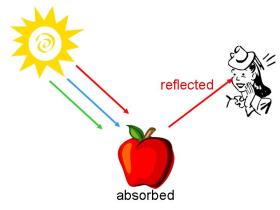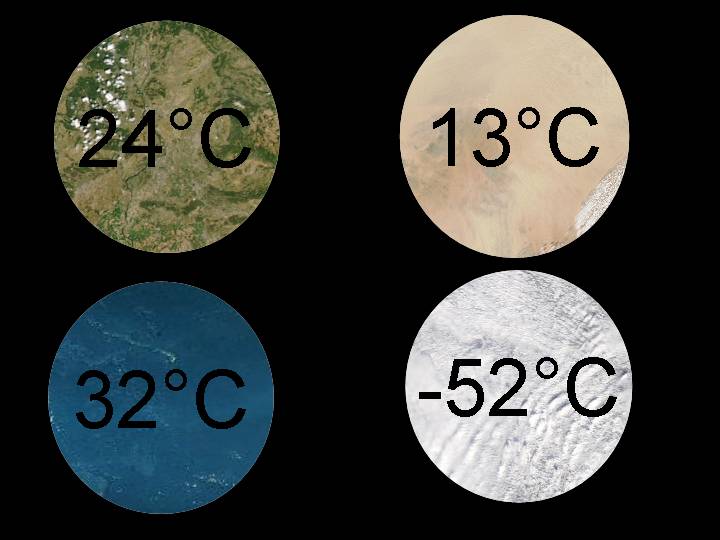 > ENC Master > Climate Encyclopaedia > Clouds & Particles > basics > 3. Sun and clouds > - Albedo
> ENC Master > Climate Encyclopaedia > Clouds & Particles > basics > 3. Sun and clouds > - Albedo
 |
|
|
|
Clouds & ParticlesBasics |
AlbedoAlbedo is a latin word (that means whiteness) used to describe how bright something is. It is very important to quantify the earth albedo for the global climate understanding. |
ColoursWhite light (or light from the sun) is composed of several colours that we don't see because they are mixed (you see them separately when looking at a beautiful rainbow or when using a prism). When light hits an object, three things can happen: light can be reflected, transmitted or absorbed.
|
|
1. Something is colored because of the light it reflects (sent to your eyes); all others colours are absorbed by the object. |
Definition of albedoThe albedo is the ratio of the light reflected by an object to the light it receives. The number that describe albedo go from 0 (no light reflected) to 1 (all light reflected), or can be expressed in percent. |
|
|
|
Nowadays the mean Earth surface temperature is 15°C. If our planet was covered with forests (Ewoks planet), average temperature would be 24°C. On a desertic Earth (planet Dune), temperature would be 13°C. If it was covered with oceans (like in the movie Waterworld), temperature would be 32°C, because oceans are dark and hence have a smaller albedo. Planet covered with ice would be cold (-52°C)! (see image 2). |
|
Clouds albedoOur planet’s albedo is very different with or without clouds. Clouds do reflect more light back to space that does blue sky. Albedo of clouds depends on several factors, including the cloud's height, its size, and the number and size of droplets inside the clouds.
|
 |
|
3. Albedos of different clouds. Author: J. Gourdeau
|
|
The european satellite METEOSAT measures sunlight reflected by the clouds and surface of the earth. Water absorbs a lot of sunlight, so it appears dark. Thick clouds have high albedos and show up bright in the satellite image. Thin cirrus clouds have low albedos and are usually semi-transparent to sunlight. |
|
Because a cloud usually has a higher albedo than the surface beneath it, the cloud reflects more radiation back to space than the surface would in the absence of the cloud, thus leaving less solar energy available to heat the surface and atmosphere. You may be interested on albedo in cities, then see here. |
|
About this page... |



